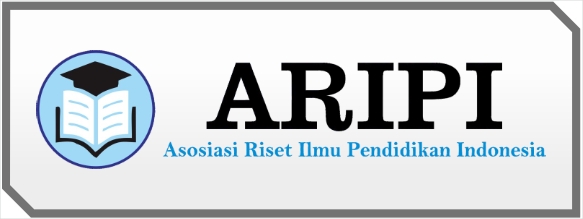Kesiapan Dosen Dalam Pembelajaran Menggunakan E-Learning
DOI:
https://doi.org/10.59581/jmpb-widyakarya.v1i2.355Keywords:
Lecturer Readiness, E-Learning, Ability and Training, Access to Technology, Lecturer AttitudeAbstract
The implementation of learning using e-learning must be supported by several readiness factors. Organizational readiness factors, such as regulations, infrastructure, technology, and policies, have a significant effect on learning outcomes using e-learning. However, the human element in its use is also the most important factor in online learning. This research was conducted to measure the readiness of lecturers using e-learning on several factors, namely; Technology access factor, skill and training factor, instructor attitude factor. The sample of this study was 100 active lecturers. Univariate data analysis was performed by calculating the average readiness index and frequency and identifying categories of readiness intervals for using e-learning. The results of this study show the readiness of lecturers in using e-learning assessed from technology mastery factors, skill and training factors, and instructor attitude factors. However, for a very mature level, refinement and development of all these factors are still necessary. In addition, the training aspect is considered quite ready, but management must open training opportunities for lecturers to run online classes.
References
Agustina, M., & Mutatkin Bakti, D. A. (2015). Tingkat Kesiapan e-learning (E-learning Readiness) Universitas Bina Darma Sebagai Media Pembelajaran Jarak Jauh. 124 Jurnal Imiah MATRIK Vol.17, 17(2), 123–132.
Cece, & Winata, E. (2019). Pengaruh Gaya Mengajar Dosen Dan Motivasi Belajar Terhadap Prestasi Belajar Mahasiswa Perguruan Tinggi Swasta Kota Medan. Jurnal Penelitian Pendidikan Sosial Humaniora, 4(1), 448–454. https://doi.org/10.32696/JP2SH.V4I1.267
Dahmiri, D., & Sakta, K. (2014). Pengaruh Pelatihan Terhadap Kinerja Pegawai Dinas Pendidikan Kabupaten Sarolangun. Jurnal Manajemen Terapan Dan Keuangan, 3(1), 374–380. https://doi.org/10.22437/JMK.V3I1.1854
Doculan, J. A. D. (2014). E-Learning Readiness Assessment Tool For Philippine Higher Education Institutions. International Journal of Engineering Sciences & Emerging Technologies, 7(3).
Eslaminejad, T., Masood, M., & Ngah, N. A. (2010). Assessment of instructors’ readiness for implementing e-learning in continuing medical education in Iran. Medical Teacher, 32(10). https://doi.org/10.3109/0142159X.2010.496006
Ha, O., JM, N., & An, W. (2014). E-Learning Readiness Assessment Model in Kenyas’ Higher Education Institutions: A Case Study Of University of Nairobi. International Journal of Scientific Knowledge, 5(6), 29–41.
Haryanti, C. S. H. S. (2020). Faktor- Faktor Yang Mempengaruhi Pemanfaatan Personal Computer ( Studi Empiris di Lingkungan Industri Terboyo Semarang ). Serat Acitya, 2(1), 65. https://doi.org/10.56444/SA.V2I1.38
Hashim, H., & Tasir, Z. (2014). E-learning readiness: A literature review. Proceedings - 2014 International Conference on Teaching and Learning in Computing and Engineering, LATICE 2014, 267–271. https://doi.org/10.1109/LATICE.2014.58
Keramati, A., Afshari-Mofrad, M., & Kamrani, A. (2011). The role of readiness factors in E-learning outcomes: An empirical study. Computers & Education, 57(3), 1919–1929. https://doi.org/10.1016/J.COMPEDU.2011.04.005
Kusjono, G., & Suprianto, S. (2020). Pengaruh Kompetensi, Gaya Mengajar dan Motivasi terhadap Prestasi Mahasiswa. Journal of Education, Humaniora and Social Sciences (JEHSS), 3(2), 620–628. https://doi.org/10.34007/JEHSS.V3I2.379
Mafenya, Patrick N. (2013). An investigation of first-year students’ pedagogical readiness to e-learning and assessment in open and distance learning: An university of South Africa context. Mediterranean Journal of Social Sciences, 4(13), 353–360. https://doi.org/10.5901/mjss.2013.v4n13p353
Mafenya, Patrick Nkhangweleni. (2014). Challenges faced by higher education institutions in research skills development: A South African open and distance learning case study. Mediterranean Journal of Social Sciences, 5(4), 436–442. https://doi.org/10.5901/mjss.2014.v5n4p436
Mercado CA. (2008). Readiness Assessment Tool for an e-learning Environment implementation: College of Information and Computing Sciences Saint Louis University, Baguio City Philippines. 2005, 1–11. https://www.academia.edu/3705074/Readiness_Assessment_Tool_for_an_eLearning_Environment_Implementation
Noesgaard, S. S., & Ørngreen, R. (2015). The effectiveness of e-learning: An explorative and integrative review of the definitions, methodologies and factors that promote e-Learning effectiveness. Electronic Journal of E-Learning, 13(4), 278–290.
Oketch, & Otchieng, H. (2013). University of Nairobi, H. A. (2013). E-Learning Readiness Assessment Model in Kenyas’ Higher Education Institutions: a Case Study of University of Nairobi By: Oketch, Hada Achieng a Research Project Submitted in Partial Fulfillment of the Requirement of M. October.
Okinda, R. A. (2014). Assessing E-Learning Readiness at the Kenya Technical Teachers College. Journal of Learning for Development, 1(3), 1–12.
Ouma, G., Awuor, F., & Kyambo, B. (2013). E-Learning Readiness in Public Secondary Schools in Kenya. European Journal of Open, Distance and e-Learning, 16(2), 97–110. http://www.eurodl.org/materials/contrib/2013/Ouma_et_al.pdf
Parlakkılıç, A. (2015). E-learning readiness in medicine: Turkish family medicine (FM) physicians case. In Turkish Online Journal of Educational Technology (Vol. 14, Issue 2, pp. 59–62).
Pratama, L. D., & Lestari, W. (2020). Pengaruh Pelatihan Terhadap Kompetensi Pedagogik Guru Matematika. Jurnal Cendekia : Jurnal Pendidikan Matematika, 4(1), 278–285. https://doi.org/10.31004/CENDEKIA.V4I1.207
Purwandani, I. (2017). Analisa Tingkat Kesiapan E-Learning (E-Learning Readiness) Studi Kasus: AMIK Bina Sarana Informatika Jakarta. Jurnal Bianglala Informatika-Jurnalbianglala.Web.Id ISSN, 5(2), 2338–9761.
Rohayani, A. H. H., Kurniabudi, & Sharipuddin. (2015). A Literature Review: Readiness Factors to Measuring e-Learning Readiness in Higher Education. Procedia Computer Science, 59(Iccsci), 230–234. https://doi.org/10.1016/j.procs.2015.07.564
Thompson, K. E., Korbmacher, J. P., Hecht, E., Hobi, N., Wittekindt, O. H., Dietl, P., Kranz, C., & Frick, M. (2013). Fusion-activated cation entry (FACE) via P2X4 couples surfactant secretion and alveolar fluid transport. FASEB Journal, 27(4), 1772–1783. https://doi.org/10.1096/fj.12-220533
Yuen, A. H. K. (2010). Blended Learning in Higher Education: An Exploration of Teaching Approaches. In S. L. Wong et al. (Ed.), Proceedings of the 18th International Conference on Computers in Education. Putrajaya, Malaysia (pp. 623–630). Asia-Pacific Society for Computers in Education.
Downloads
Published
How to Cite
Issue
Section
License
Copyright (c) 2023 Fandianta Fandianta, Herry Hermansyah, Refai Refai

This work is licensed under a Creative Commons Attribution-ShareAlike 4.0 International License.














